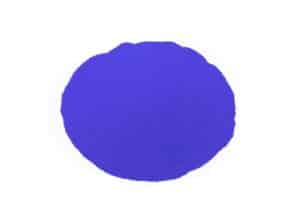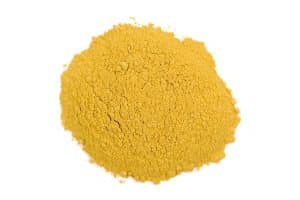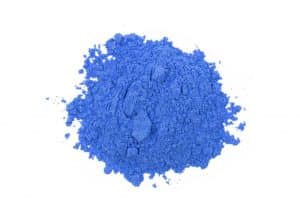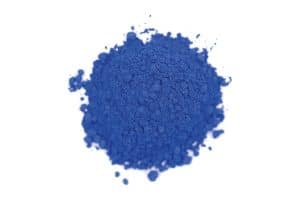Description
- Chemical composition : As4S4
C.I. 77085, Pigment Yellow 39
Realgar is the natural orange-red sulphide of arsenic. It is closely related chemically and associated in nature
with orpiment. The two minerals are often found in the same deposits. Realgar occurs as a minor constituent
in certain ore veins associated with orpiment and other arsenic minerals, with stibnite, lead, gold and silver.
It is found in Romania, the former Czechoslovakia, and the former Yugoslavia, Greece, Germany, Italy,
Corsica and the western United States.
The name is derived from the Arabic rahj al ghar, powder of the mine. The Latin term was sandarach and
De Mayerne who was writing in the seventeenth-century referred to it as rubis d’orpiment.
Realgar has been found on a few works by Tintoretto and from Bulgarian icons dating from the Middle Ages
to the Renaissance. Realgar has also been reported on Indian sixteenth- to seventeenth-century paintings and
an eleventh- to thirteenth-century manuscript from Central Asia.
Realgar appears to be less permanent and is known to change to orpiment after long exposure to light.
Chinese realgar figurines from the eighteenth-century had oxidized to orpiment and arsenious oxide
(Daniels).
The chemical and physical properties are similar to orpiment. It belongs to the same crystal system
(monoclinic). Its color is orange or an orange-red by transmitted light but usually many yellow particles of
orpiment can also be seen. The particles of mineral realgar are usually granular, coarse to fine and have a
resinous to greasy luster.





